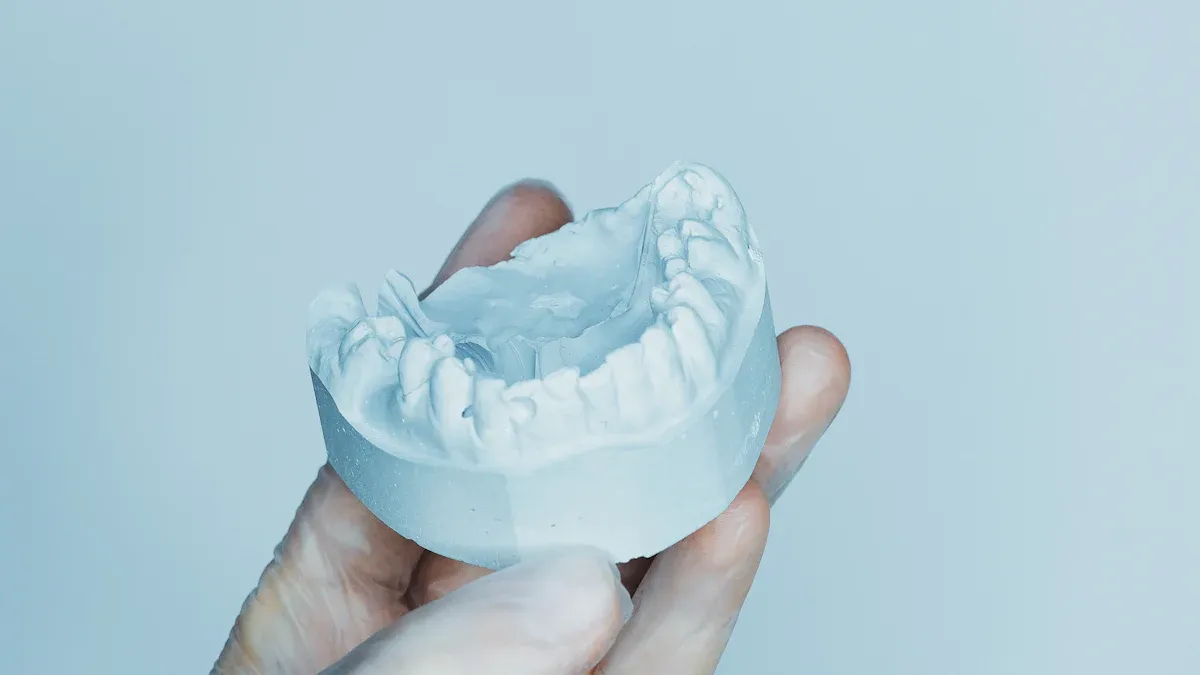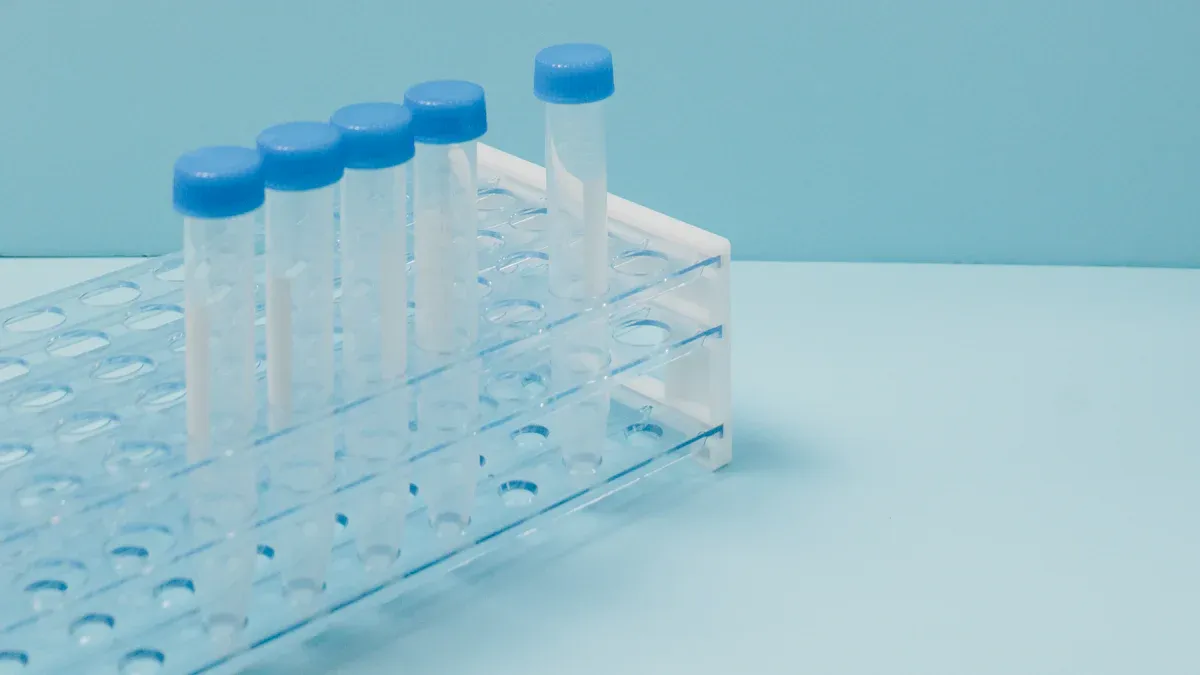Discover the Secret of Biocompatible Polyimide Tubing

When making medical devices, safety is the most important thing. Biocompatible polyimide tubing is a great material for this. It does not react with chemicals and stays stable in the body. It also does not break down easily over time. These features make polyimides safe to use with the human body. This lowers the chances of any problems. For many years, polyimide tubing has been used in important medical tools like implants and tests. Its excellent safety makes it very useful for improving healthcare technology.
Key Takeaways
Biocompatible polyimide tubing is safe for medical use. It stays stable and does not break down in the body.
Polyimide tubing follows strict safety rules like FDA Class VI and ISO 10993. This makes it trustworthy for medical tools.
The tubing is bendable and strong, perfect for catheters, endoscopes, and implants.
Polyimides do not release harmful chemicals. They are safer than materials like silicone and PVC.
Polyimide tubing lasts a long time, helping patients get better results from treatments and devices.
Why is Biocompatible Polyimide Tubing Safe for Medical Use?
Strong Against Chemicals
Polyimides are very strong and don’t react with chemicals. This makes them great for medical use. Biocompatible polyimide tubing stays stable in tough conditions. For example, some polyimides, like BPDA-PPD, absorb only 0.045% water. This tiny amount of water keeps the tubing strong and working well. Tests show that soaking polyimides in salty water at body heat doesn’t harm them. Even after 20 months in fake body conditions, BPDA-PPD polyimides stay strong. These features make polyimides safe and reliable for the human body.
Doesn’t Break Down in the Body
Polyimide tubing doesn’t break down in the body. Some materials fail in biological environments, but polyimides stay solid. This is important for devices like implants that need to last long. Polyimides don’t react with body fluids or tissues. They also don’t release harmful stuff into the body. This makes them a safe and trusted choice for medical tools.
Meets Safety Rules
Polyimides are tested to meet strict safety rules. Many polyimide tubes pass FDA Class VI tests, proving they’re safe for medical use. Companies also get ISO 13485 certification to show they make high-quality devices. These tests check that the tubing is safe for the human body. About 73% of medical companies want tubing that’s pure and chemically safe. These rules ensure polyimide tubing is safe and reliable for medical needs.
Applications of Polyimide Tubing in Medicine

Cardiovascular Catheters and Urological Devices
Polyimide tubing is important for heart and urinary procedures. It bends easily and stays strong, making it great for catheters. These catheters move through tiny blood vessels or urinary paths. Polyimides keep their shape and work well in tough conditions. This helps during critical procedures like clearing arteries or draining urine. The tubing is safe for the body and reduces bad reactions. This makes it a reliable choice for these delicate uses.
Endoscopes and Diagnostic Tools
Doctors use polyimide tubing in endoscopes and other tools. Its thin but strong walls make devices small and light. This helps doctors do less invasive surgeries with better precision. For example, flexible endoscopes use polyimides for clear images and easy movement. Testing centers also use this tubing in advanced tools for accurate results. Its chemical stability stops contamination, which is key for correct diagnoses.
Implantable Medical Devices
Implants need materials that last inside the body. Polyimide tubing is perfect because it doesn’t break down or react with chemicals. It’s used in pacemakers, stents, and medicine delivery systems. Hospitals trust polyimides for their safety and long-lasting performance. As technology improves, more implants use this tubing. Its reliability makes it a top choice for medical advancements.
Research shows polyimide tubing is widely used in surgeries, tests, and medicine delivery. Hospitals use it most because they handle many procedures. Outpatient centers are also using it more for cheaper treatments. This rising demand shows how vital polyimides are in today’s healthcare.
Advantages of Polyimide Tubing Over Other Materials
Comparing with Silicone and PVC
Polyimides are better than silicone and PVC in many ways. Silicone is bendable but not strong enough for some medical uses. PVC is strong but can release harmful chemicals over time. Polyimide tubing is both flexible and very strong. It also stays safe and stable with chemicals. Unlike PVC, polyimides don’t release harmful substances. This makes them safer for medical use. Polyimide tubing is the best choice when safety and strength are needed.
Special Features Like Flexibility and Heat Resistance
Polyimides have special features that make them stand out. They are flexible, so they work well in tools like catheters and endoscopes. They can bend and twist without breaking, which is important for medical devices. Polyimides also handle heat very well. They stay strong even after being sterilized in high heat. This mix of flexibility and heat resistance makes them reliable for tough medical tasks.
Tip: Need a material for heat and delicate movements? Choose polyimides.
Reliable for Long-Term Medical Use
Polyimide tubing is very reliable for long-term use. It doesn’t break down or react with body fluids, even after a long time. This makes it great for implants like pacemakers and stents. Other materials may fail, but polyimides stay strong and safe. They keep working well, which is important for patient safety. Polyimide tubing ensures devices last and work properly for better medical results.
Testing and Certification for the Safety of Polyimides
What Are ISO 10993 and USP Class VI Standards?
Polyimides must pass strict tests to be safe for medical use. ISO 10993 is a global rule that checks how materials affect the body. It tests for things like cell damage, allergies, and skin irritation. These tests make sure polyimides are safe for human tissues. USP Class VI standards check how materials react to heat, chemicals, and body fluids. Passing these tests proves that polyimide tubing is safe and dependable for medical devices.
How Biocompatibility Tests Work for Polyimide Tubing
Biocompatibility tests check how polyimides behave with the body. Manufacturers use standard samples to keep tests fair and accurate. For example, they often test 200 square samples in groups. Tests include checking for cell harm, blood safety, and harmful chemical leaks. Final devices also go through detailed checks following ISO 10993 rules. This careful process ensures polyimide tubing is safe and meets top standards.
Why Certification Matters for Patient Safety
Certifications are key to keeping patients safe. When polyimides pass ISO 10993 and USP Class VI tests, they are proven safe for medical use. These tests lower risks by showing the material won’t harm the body. For example, polyimide tubing in implants or tools must stay safe over time. Using certified materials helps protect patients and improve healthcare quality.
Biocompatible polyimide tubing is reliable and useful for medical tools. It stays stable with chemicals and bends easily for tough tasks. Its safety for patients is proven, and it meets strict rules. This makes it better than many other materials. As healthcare improves, polyimides help patients and support new medical ideas.
FAQ
What is polyimide tubing made of?
Polyimide tubing is made from polyimide, a strong plastic-like material. It stays stable with chemicals, bends easily, and handles heat well. These features make it perfect for safe and long-lasting medical uses.
Can polyimide tubing be sterilized?
Yes, you can clean polyimide tubing with heat or chemicals. It can handle high temperatures without breaking, so it works well for repeated use in hospitals.
Is polyimide tubing safe for implants?
Polyimide tubing is safe for implants because it doesn’t break down. It also doesn’t react with body fluids or release harmful chemicals. It meets strict safety rules like ISO 10993 to protect the body.
How does polyimide tubing compare to silicone?
Polyimide tubing is stronger and more stable than silicone. Silicone bends well but may not last as long or handle heat like polyimide. Polyimide is better for strength, flexibility, and long-term use.
Where can I use polyimide tubing in medical devices?
You can use polyimide tubing in catheters, stents, and endoscopes. It’s flexible and safe for tools that go inside the body. It works well for surgeries and implants that need to last a long time.
Note: Always check with makers to ensure the tubing fits your medical needs.
See Also
Selecting Ideal FEP Biocompatible Heat Shrink Tubing Options
Comprehensive Overview of Medical Grade FEP Tubing
Tips for Selecting FEP Shrink Tubing for Class III Devices
Key Uses of Ultrathin-Wall PET Heat Shrink Tubing in Medicine

